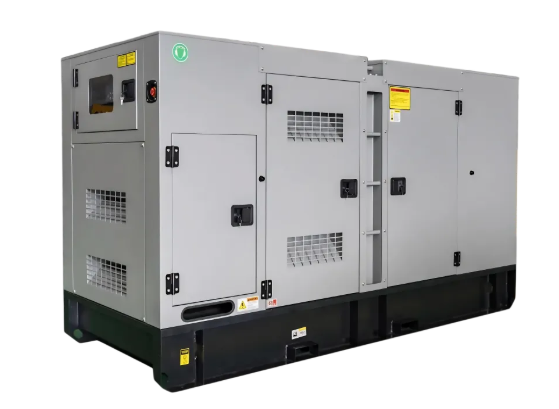Understanding Generator Efficiency Metrics
Fuel Consumption Rates Across Generator Sizes
Fuel consumption rates in generators are fundamentally tied to their size, with larger generators often exhibiting lower consumption per kilowatt-hour produced. When evaluating a 30kVA generator, it's imperative to consider empirical data that contrasts its fuel efficiency with that of smaller and larger generators. Studies and manufacturer specifications frequently indicate that while smaller generators may be more economical in initial purchase, they tend to consume more fuel over time as compared to 30kVA generators. Larger generators, on the other hand, benefit from economies of scale, leading to reduced fuel costs per unit of energy produced.
Operational budgets can be significantly impacted by fuel costs, which underscores the importance of selecting a generator size that aligns with energy demand. As generator size increases, the cost per kWh tends to decrease, potentially offering savings on fuel if operational load matches the generator's capacity.
Power Factor and Energy Conversion Efficiency
The term "power factor" is crucial in understanding generator efficiency, as it measures the efficiency of electrical power usage. For generators, this is defined as the ratio of real power used to the apparent power in the circuit. Ideally, the power factor should be as close to 1 as possible, indicating efficient utilization of electrical power. Typical power factor ranges for a 30kVA generator tend to hover around 0.8 to 0.9, which is standard across various generator sizes as per industry standards.
Energy conversion efficiency is integral for evaluating generator performance. This metric can be substantiated through statistics from energy departments that showcase the conversion of fuel into electrical energy. Generators with advanced technology tend to have higher conversion efficiencies, minimizing waste and enhancing grid productivity.
Environmental Impact of 30kVA vs. Other Sizes
Assessing the environmental impact of generators necessitates an analysis of the carbon footprint and emissions associated with different sizes. A 30kVA generator typically strikes a balance between manageable emissions and operational output. Smaller generators might emit less, but they often require more frequent fuel use, while larger units can have reduced emissions due to fewer operational cycles.
Regulations surrounding emissions are vital, as compliance ensures minimal environmental impact. Recent statistics from industry reports highlight that generators with innovative technologies can achieve considerable emissions reductions. Opting for models that comply with environmental standards not only mitigates impact but also aligns with sustainability goals.
Performance Comparison by Load Capacity
Optimal Load Range for 30kVA Generators
Understanding the optimal load range for 30kVA generators is crucial for maximizing performance and efficiency. Typically, these generators perform best when operating at 70-80% of their maximum capacity. Operating within this range minimizes fuel consumption and reduces wear and tear, thereby prolonging the lifespan of the generator. Data indicate that efficiency rates can vary significantly with fluctuating load scenarios; overloading or underloading can lead to inefficient fuel usage and increased operational costs. It is essential to maintain operation within this optimal load range to achieve the best balance between performance and fuel efficiency.
Surge Power Handling: 30kVA vs. Smaller/Larger Units
Surge power is the extra capacity a generator can handle for a short period to accommodate spikes in demand. This is vital for ensuring smooth operation in real-world applications where power demands are inconsistent. A 30kVA generator offers a middle ground, providing moderate surge power handling that often suits small to medium enterprises. Comparative analyses show that while smaller units may struggle with high surge demands, larger units can manage but often at a higher cost. In various real-world applications, such as powering large machinery temporarily, having adequate surge capacity can prevent system breakdowns and maintain operational efficiency.
Longevity Under Continuous Use Scenarios
The expected lifespan of a 30kVA generator under continuous use often matches or surpasses that of smaller and larger units, provided maintenance requirements are diligently followed. Regular maintenance, including oil changes and inspections, is critical. Neglecting these can significantly reduce the generator's lifespan, especially under continuous load conditions. Case studies reveal that well-maintained 30kVA generators can last for years in continuous-use settings, highlighting the importance of adhering to maintenance schedules to ensure longevity and reliable performance.
10-20kVA Generators: Efficiency Tradeoffs
Analyzing efficiency differences between 30kVA generators and their smaller 10-20kVA alternatives is crucial for optimal generator selection. In general, smaller generators offer lower efficiency levels, often resulting in higher operational costs due to increased fuel consumption. For example, smaller units might operate at an efficiency rate of around 75%, while a 30kVA generator could peak at 85% depending on its load and usage conditions. Despite these tradeoffs, smaller generators may prove advantageous in situations where flexibility and portability are prioritized, such as temporary setups at construction sites or small-scale events. According to industry statistics, larger capacity generators usually deliver better fuel efficiency and performance, but the specific requirements of your business might warrant opting for a smaller, less efficient generator. In scenarios where the power demands are minimal, leveraging a smaller generator can prevent the unnecessary cost of maintaining a larger, more powerful unit and ensure adequate power supply without overspending.
50-100kVA Units: When Larger Outperforms
For certain operational conditions, larger generators ranging from 50 to 100kVA may outperform the standard 30kVA unit. These advantages are particularly evident in environments requiring sustained power supply for extensive equipment or facilities with heavy-load applications, such as industrial manufacturing or expansive commercial operations. Data supports that larger generators often exhibit superior performance in terms of load distribution and stability, effectively reducing the risk of overloads and ensuring seamless operations. Feedback from companies that have transitioned to these larger units often highlights improved operational efficiency and reliability. Market trends indicate a steady shift towards these larger generators, especially within sectors experiencing growth in power demands, as they offer a robust solution capable of addressing both current and foreseeable needs. Businesses that prioritize scalability and anticipate rising energy requirements often find these larger units to be a strategic investment for sustaining growth.
Cost-Performance Ratio Analysis
Defining the cost-performance ratio in the context of generators is instrumental for making informed purchasing decisions. This ratio evaluates the balance between the initial investment in a generator and its operational efficiency over time. When comparing the 30kVA generator to its alternatives, understanding both the upfront costs and subsequent expenses, such as fuel and maintenance, is essential. Although a 10kVA unit might present lower initial costs, the reduced efficiency could result in higher operational expenses, negating potential savings. Conversely, larger units like the 50-100kVA offer a favorable cost-performance balance by delivering higher efficiency and lower long-term costs despite a higher initial outlay. Real-world examples demonstrate regular maintenance for these larger units can mitigate long-term expenses through improved reliability and longevity. Expert opinions suggest assessing your specific power needs and budget constraints to determine which generator configuration provides the best value proposition. Careful consideration of the cost-performance ratio will enable businesses to achieve optimal energy solutions tailored to their unique requirements.
Application-Specific Efficiency Considerations
Commercial vs. Industrial Power Demands
The power requirements for commercial and industrial applications vary significantly, and a 30kVA generator can be well-suited to meet these needs. Commercial settings such as small retail outlets and office buildings often have lower power demands, making the 30kVA generator an ideal choice for its ability to offer efficient and reliable power without unnecessary energy wastage. Industries such as small manufacturing facilities or workshops, however, may also find benefits with this capacity, especially when operating machinery with moderate power needs. According to industry data, commercial sectors typically require a backup power capacity ranging from 20kVA to 50kVA, aligning perfectly with 30kVA's capabilities for balanced operational costs and efficiency.
Backup Power Reliability Across Sizes
When evaluating backup power solutions, reliability is paramount. A 30kVA generator offers a solid balance between size and reliability, catering to medium-scale power needs without overburdening resources or space. Unlike smaller counterparts that might struggle under peak loads or larger generators that result in higher initial costs, a 30kVA generator tends to exhibit a reliable operational profile, making it a popular choice for small to medium enterprises. Data from energy studies indicates that mid-range generators like the 30kVA have lower failure rates compared to both extremes, ensuring consistent performance and enhancing the decision-making process for businesses focused on uninterrupted power.
Fuel Type Flexibility (Diesel/HVO)
Fuel type flexibility is a significant advantage when considering a 30kVA generator, especially with the options for both diesel and Hydrotreated Vegetable Oil (HVO). Diesel remains a widely-used choice due to its availability and energy efficiency. However, HVO provides an environmentally-friendly alternative, significantly lowering emissions and aligning with stricter regulatory standards. The performance efficiency of a 30kVA generator using HVO matches that of diesel in various scenarios, delivering cleaner energy while maintaining reliability. Environmental agencies report that switching to HVO can decrease lifecycle greenhouse gas emissions by up to 90%, making it an appealing choice for sustainability-focused operations.
FAQ
What is the significance of generator fuel consumption rates?
Fuel consumption rates are important as they indicate the efficiency of a generator in converting fuel into electricity. Larger generators typically have lower consumption per kilowatt-hour compared to smaller ones, meaning they are more fuel-efficient over time.
Why is the power factor important in generators?
The power factor measures how effectively a generator converts electrical power into work. A power factor close to 1 means efficient utilization, which is crucial for reducing energy waste and operational costs.
How does a 30kVA generator affect the environment compared to other sizes?
A 30kVA generator offers a balance between emissions and output. It generally has manageable emissions when compared to smaller and larger units, which is crucial for compliance with environmental standards and sustainability goals.
When should I consider a larger generator, like a 100kVA unit?
Larger generators should be considered when your operations require sustained, high-capacity power, such as in industrial settings, or when scalability for future power needs is a priority.
What factors should be considered in selecting the optimal generator size?
Consider factors like true power requirements, phase configuration needs, noise levels, and available space. Also, assess whether the generator can handle surge power and meets your budget constraints for optimal selection.
Table of Contents
- Understanding Generator Efficiency Metrics
- Performance Comparison by Load Capacity
- Application-Specific Efficiency Considerations
-
FAQ
- What is the significance of generator fuel consumption rates?
- Why is the power factor important in generators?
- How does a 30kVA generator affect the environment compared to other sizes?
- When should I consider a larger generator, like a 100kVA unit?
- What factors should be considered in selecting the optimal generator size?

